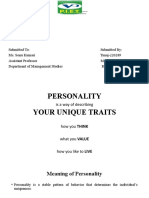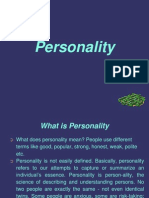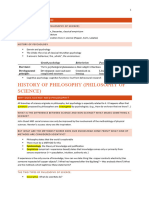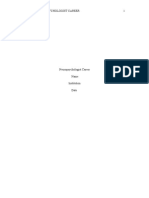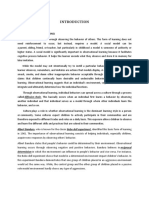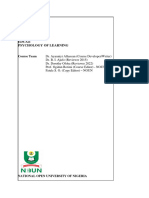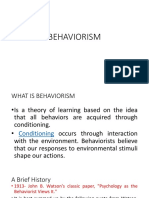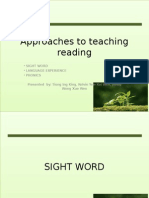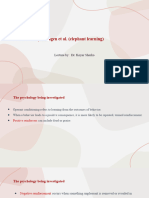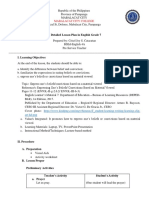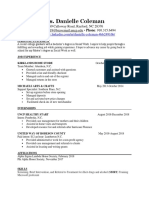100% found this document useful (1 vote)
90 views39 pagesIntroduction to Learning Concepts
This document provides an overview of learning and different types of learning. It discusses:
1. What learning is and how any change in behavior through experience is a form of learning.
2. The main types of learning including classical conditioning, operant conditioning, cognitive learning, and observational learning.
3. Classical conditioning in more detail, outlining the components like unconditioned stimulus, conditioned response, and different types of conditioning sequences.
4. Operant conditioning and how reinforcement and punishment impact behavior.
5. Examples of how different types of learning are applied in real life contexts.
Uploaded by
NURUL FARHANA BINTI IMRAN -Copyright
© © All Rights Reserved
We take content rights seriously. If you suspect this is your content, claim it here.
Available Formats
Download as PDF, TXT or read online on Scribd
100% found this document useful (1 vote)
90 views39 pagesIntroduction to Learning Concepts
This document provides an overview of learning and different types of learning. It discusses:
1. What learning is and how any change in behavior through experience is a form of learning.
2. The main types of learning including classical conditioning, operant conditioning, cognitive learning, and observational learning.
3. Classical conditioning in more detail, outlining the components like unconditioned stimulus, conditioned response, and different types of conditioning sequences.
4. Operant conditioning and how reinforcement and punishment impact behavior.
5. Examples of how different types of learning are applied in real life contexts.
Uploaded by
NURUL FARHANA BINTI IMRAN -Copyright
© © All Rights Reserved
We take content rights seriously. If you suspect this is your content, claim it here.
Available Formats
Download as PDF, TXT or read online on Scribd
/ 39






